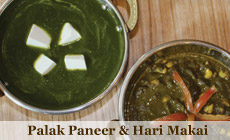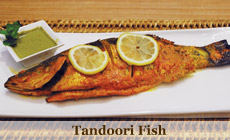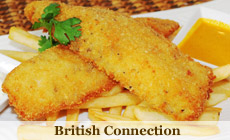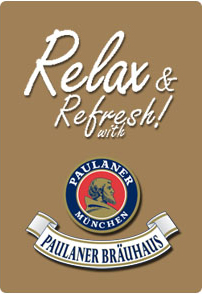The Concept
The Chicken Tikka Masala's popularity cannot be exaggerated in the UK and any Indian living in the UK can vouch for that—from Glasgow to Ipswich the dish is unmatched in its fame. The famous Chicken Tikka Masala has in fact now, replaced the steak and kidney pie as the spicy staple for the British army.
Such is the popularity of this Indian preparation. Relish our famous Chicken Tikka Wrap, Ceasar Salad with Chicken Tikka, Chicken Tikka Sandwich and Makhni Pasta with Chicken Tikka.
Intriguingly the origins of this unusual popularity of an Indian dish in a European setting lie in the pages of Indian history, when the east met the west a long long time ago in India.
 For over 300 years the British made India their home and in that span, gradually but surely they imported their unique winning ways; their civil administration, their ideas of democracy, their railways, their army and most importantly their food. This import of the British ways resulted in a distinctly unique cultural mileu called the Colonial Raj or the British Raj which cannot be seen anywhere else but in India. Simultaneously an export of the Indian ways was also happening. British officers returning home and having developed a taste for the Indian spices, Indian hospitality and culture, took back with them all that they so enjoyed during their stay in India, inadvertently laying the foundation of anglo Indian cuisine in the UK, that today is so visible in its presence in the form of the numerous Indian restaurants.
For over 300 years the British made India their home and in that span, gradually but surely they imported their unique winning ways; their civil administration, their ideas of democracy, their railways, their army and most importantly their food. This import of the British ways resulted in a distinctly unique cultural mileu called the Colonial Raj or the British Raj which cannot be seen anywhere else but in India. Simultaneously an export of the Indian ways was also happening. British officers returning home and having developed a taste for the Indian spices, Indian hospitality and culture, took back with them all that they so enjoyed during their stay in India, inadvertently laying the foundation of anglo Indian cuisine in the UK, that today is so visible in its presence in the form of the numerous Indian restaurants.
Now, long after the colonial raj stopped existing, the remnant of this grand culture, still shows in a few little things like the great Indian railways, Lutyen’s architecture, the Indian administrative services and the ever so famous Anglo Indian cuisine
Born out of the need to satisfy the gastronomical cravings of a homesick British gentleman (and his accompanying lady) by tempering the native eating habits to suit his international palette, the Anglo Indian cuisine is a perfect co- mingling of the east and the west--It is considered a perfect synthesis because it came to being in a time, when the east was east and the west was west.
Characterized by ample usage of native Indian spices on varieties of meats, home grown methods of stewing, grilling and roasting, the food in the Anglo Indian cuisine spectrum, includes sea food, tandoori baked food, Indian breads, curries, chutneys, soups and other delicacies that today have become famous among those who have had a chance to know it. In addition to this, what makes the complete Anglo Indian food culinary experience is the service, which has to have that certain Raj elegance and cultivated style in fine dining, that called for warm, courteous, ever present yet non intrusive attendance—all in keeping with the decorum.
Come relive that Raj experience, play the Burra Sashib as our staff fuss over you, while you savor the best that was ever laid out by the grandest of cultures
The plains of Punjab
The plains of Punjab, fertile and filled with nature’s bounty have been the prime reason for some of best north Indian vegetarian fare—readily available fresh vegetables, green leaves, home dairies and lentils all add up to this rustic farmer’s style preparation. Healthy, filling and always with a rich dollop of clarified home- made butter, Desi ghee, Punjabi food in colonial times brought in the best from both sides of Punjab--from Lahore to Amritsar.
- Aloo Gobi
- Saag Palak
- Balti Paneer
- Lahori Chole
- ...etc



The Frontier cuisine
The North West frontier province is one of the harshest lands that the British ever came to know during their stay outside their homeland. Harsh weather, warm & gentle people and conditions that suited only warriors created the famous frontier province style, of martial cooking.

- Tandoori chicken
- Naan/Paratha/Kulcha (Indian tandoor cooked breads)
- Roghan Josh
- ...etc
The Coastal Experience
The coastal plains of India were very different from what the average British gentle man was accustomed to back home, it offered a variety of sea fish that was unavailable in European seas— and so from the coasts of Goa to Kerala, fish, prawns & calamari were done up in Indian spices to suit the European palette.
….sea food menu.









